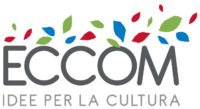Rob Redfield, in the 1957 conference “The universally human and the culturally variable”, provided a tool, that is still useful today, for reading how culture is stratified over time and how it can inform different levels. The Redfield strategy is actually very useful for distinguishing the ways in which we can think about culture, and for the different dimensions that are recognised in this concept. It puts on the same horizontal axis the contrasting modes of thinking and acting that are biologically inherited (Hereditary) with those acquired through the course of life experience (Acquired), which then encounter three ways of “thinking about oneself in the world”: separately, as individuals (defined as individual or idiosyncratic); within community or society, that is, within one’s own group or public of reference; and together with all human beings, that is, in the world as a person and with all people (this level is known as the Universal or pan-human scheme). The intersections created by the juncture of these elements represent different conceptions of understanding human nature. Pan-human is what should be applied to activate intercultural processes, departing from a point of view that allows us to conceive of ourselves as members of humanity.
